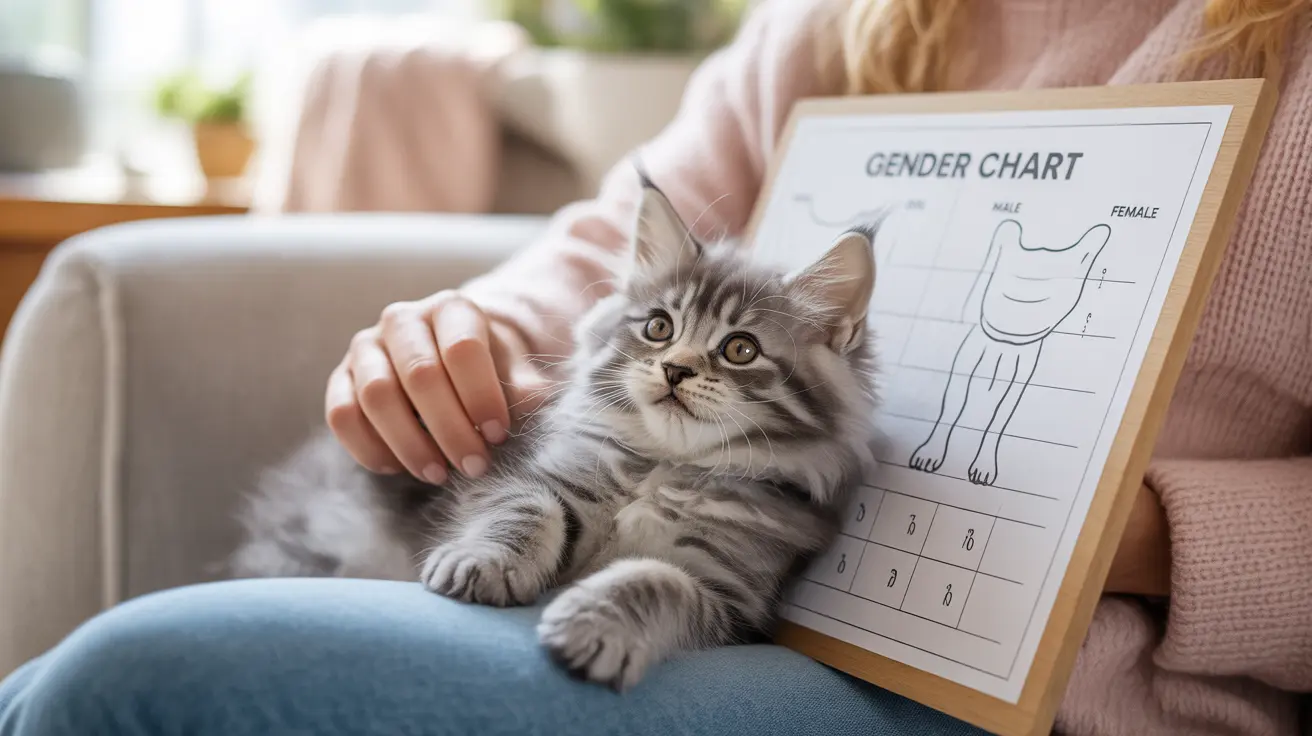Understanding the Basics of Kitten Gender Charts
A kitten gender chart typically displays clear diagrams or photographs that highlight the distinct anatomical differences between male and female kittens. These charts focus on two primary areas: the shape of the genital opening and the spacing between the anus and genitals. Understanding how to interpret these visual guides is essential for accurate gender determination.
Female Kitten Characteristics
When examining a female kitten using a gender chart, look for these distinctive features:
- A vertical slit-shaped genital opening (resembling an "i" or "¡")
- Minimal space between the anus and genital opening (approximately 5mm)
- No visible testicular bulges or additional tissue between openings
Male Kitten Characteristics
Male kittens display notably different anatomical features:
- A circular genital opening (resembling a ":")
- Greater distance between anus and penis (about 1cm)
- Development of scrotal tissue between openings (visible after 6 weeks)
- Small, pea-sized testicles (apparent in older kittens)
Best Practices for Using Gender Charts
To maximize the accuracy of your gender determination efforts:
- Compare your kitten's anatomy directly with the chart illustrations
- Ensure proper lighting and gentle handling during examination
- Use a magnifying glass if needed for clearer viewing
- Consider examining multiple kittens side-by-side for comparison
- Document your observations for future reference
Age-Related Considerations
The effectiveness of gender charts varies depending on the kitten's age:
- Under 3 weeks: Differences are subtle and harder to distinguish
- 3-6 weeks: Spacing becomes more noticeable
- 6-10 weeks: Gender characteristics are most apparent
- Beyond 10 weeks: Sexual characteristics are fully developed
Supporting Methods for Gender Identification
Coat Color Indicators
While not definitive, certain coat patterns can provide additional clues:
- Calico and tortoiseshell patterns are almost exclusively female (99%+)
- Orange tabbies are predominantly male (80-90%)
- Solid colors offer no reliable gender indication
Professional Verification
If you're uncertain about your interpretation of the gender chart:
- Consult with a veterinarian during routine checkups
- Ask experienced breeders or shelter staff for guidance
- Consider having a professional confirm during vaccination visits
Common Challenges and Solutions
Several factors can complicate gender determination:
- Young age making characteristics less distinct
- Uncooperative kittens during examination
- Poor lighting conditions
- Inexperience with anatomical differences
Frequently Asked Questions
How can I use a kitten gender chart to tell if my kitten is male or female?
Look for the distinctive genital shapes and spacing shown in the chart. Female kittens have a vertical slit close to the anus, while males have a circular opening with more space between the openings.
What physical differences should I look for when visually examining my kitten's genital area?
Focus on the shape of the genital opening (vertical slit for females, circular for males) and the spacing between the anus and genitals (closer in females, further apart in males).
At what age is it easiest to accurately determine a kitten's gender?
Gender determination is most accurate between 6-10 weeks of age, when physical differences become more pronounced and male kittens begin developing visible testicles.
Can a kitten's coat color help me identify if it is male or female?
Yes, certain coat patterns can provide clues. Calico and tortoiseshell cats are almost always female, while orange tabbies are predominantly male, though these are not definitive indicators.
What are the safest and most effective tips for sexing a kitten at home?
Use gentle handling, good lighting, and compare with a reliable gender chart. Work in a calm environment, and if unsure, seek professional verification from a veterinarian.






